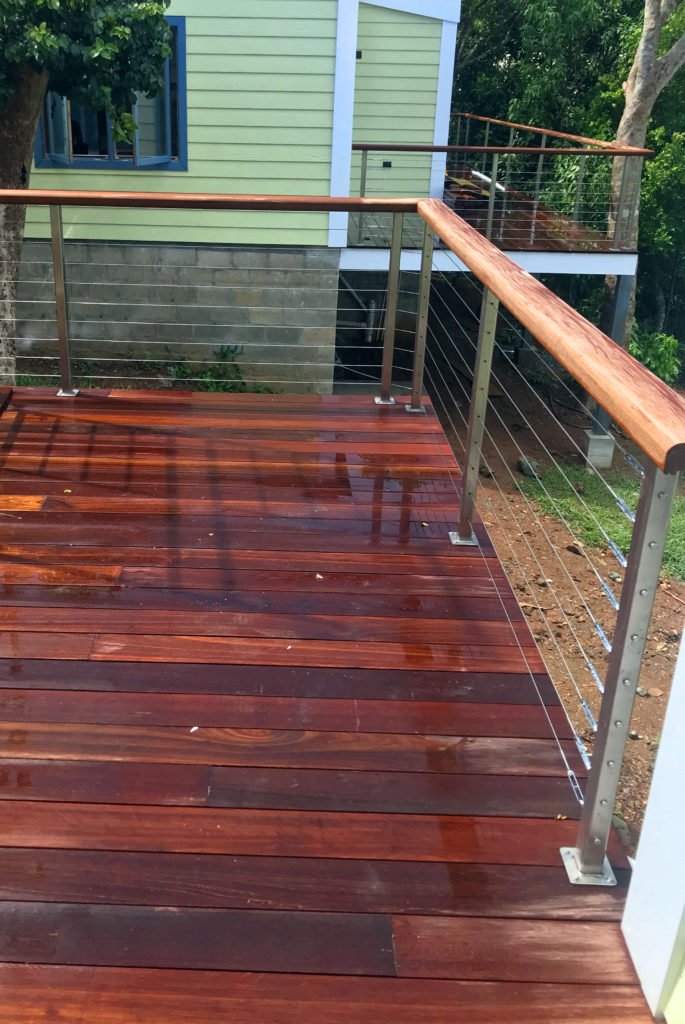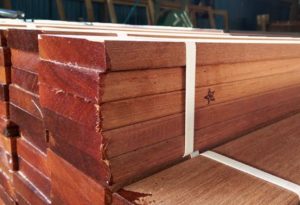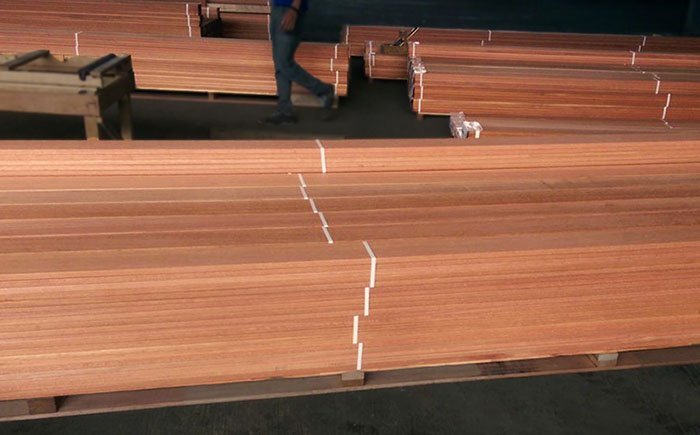Red BAlau
An FSC Tropical Decking Alternative
Shorea guiso

Using Red Balau hardwood as decking is not a new idea. In fact you have probably already seen it in other products. The Shorea genus brings us a multitude of products known by other names.
- Meranti – commonly seen in decks, marine plywood and as a solid wood in boat building.
- Lauan – another Mahogany variant which is seen in boat building and in low cost plywood.
- Philippine Mahogany – excellent exterior wood that is very lightweight which is seen in boats and homes.
Red Balau is just one of the species in the Shorea genus and has been on the market as a decking product for many years as well. It is an excellent tropical decking solution with superior insect and rot resistance.
Red Balau Decking
It is hard and durable and much more color consistent than other tropical decking species like Meranti, Ipe and Cumaru. The grain is tight with smaller pores and despite its interlocked grain, so you won’t find the striping and raised grain common with other products. Best of all it is a beautiful, rich reddish brown decking board that is clear of defects, so you have much less waste during the installation. The hardness, while still quite high (comparable to Hard Maple), it is soft enough to not burn out drill motors and strip screws like its much harder tropical decking brothers.

Currently we offer 5/4×6 and 1×4 decking in a variety of lengths as a ready to install decking board surfaced on 4 sides (S4S) and eased on 4 edges (E4E). We can also groove it for hidden clip fasteners or provide it un-grooved for face screwing installation. We also supply screws, clips, oil, sealant, etc. Anything you need for your deck build.
Red Balau Decking Price
Not only is it a beautiful and durable alternative to Meranti, Ipe or Cumaru, but it can often be obtained at 1/3 to 1/2 the price of Ipe and Cumaru! The key difference with our Red Balau and the popular Meranti decking products is that we source a specific species of the Shorea genus, and therefore can give you a much more consistent color match between boards. Most Meranti decking is a conglomeration of multiple Shorea species with variegated grain and color.
Sustainably Sourced and FSC® Certified

The hardwood comes from Indonesia, and we are the direct importer of record. All our Balau decking is from sustainable, permanent forests, and carries an FSC® certification. We visit the mills we purchase from in order to ensure they practice sustainable forestry from stump to shipping container. We can provide a chain of custody documentation which you might need to qualify for LEED points.
We have reviewed this as a potential product for years, and we only started to stock it when we were certain we had identified the right mills that could continuously supply us with a single species in order to ensure color consistency and quality from one board to the next and from one shipment to the next.
red Balau SPECIFICATIONS
| Character | Dry | Units |
| Bending Strength | 17730 | psi |
| Max Crushing Strength | 10280 | psi |
| Stiffness | 2457 | 1000 psi |
| Work to Maximum Load | 14 | in-lbs/in3 |
| Hardness (Janka) | 1600 | lbs |
| Specific Gravity | .69 | – |
| Weight | 53 | lbs/ft3 |
| Density | 53 | lbs/ft3 |
| Radial Shrinkage | 5.5 | % |
| Tangential Shrinkage | 10.1 | % |
| T/R Ratio | 1.8 | – |
| Volumetric Shrinkage | 15.7 | % |
Installation Guidelines

- When the decking arrives, keep your boards dry and in the shade; then allow the boards to acclimate to your local environment for a few days.
- Seal the end grain of any freshly cut boards (End Sealer available with purchase, ask your salesman)
- Red Balau is much less dense than Ipe and Cumaru, but we still recommend pre drilling all screw holes.
- Keep pilot holes 3/4″ away from the end of boards to prevent splitting
- For ground level decks, maintain 12-18″ of clearance under the deck for proper ventilation. Failure to do so will result in deck boards cupping, cracking, or buckling.
- Decking can be left unfinished and will weather to a silvery gray, but we recommend applying a deck oil after installation (on all 4 sides) to slow moisture exchange in the wood for the most stable boards.
- Use only high quality deck screws with square or star drive heads, as dense and hard tropical decking will snap lesser quality screws.
- Assume 1/4″ gap spacing between boards to start, then adjust your spacing based on your specific environment.


